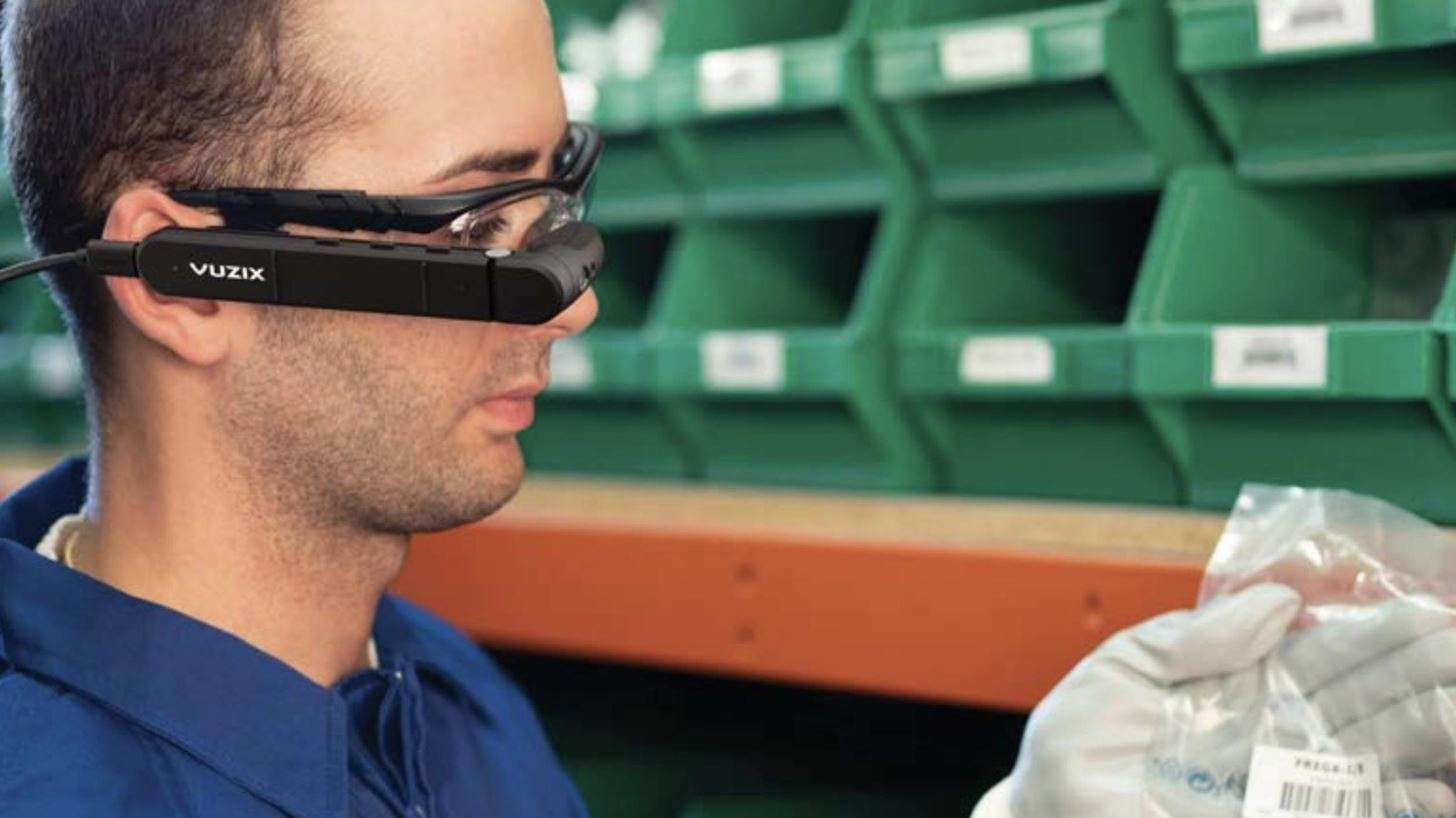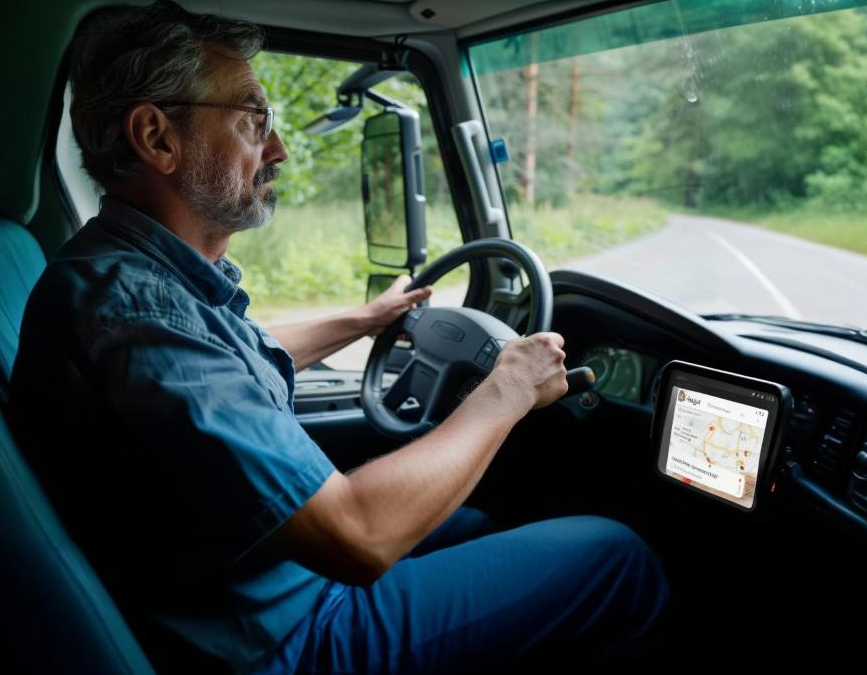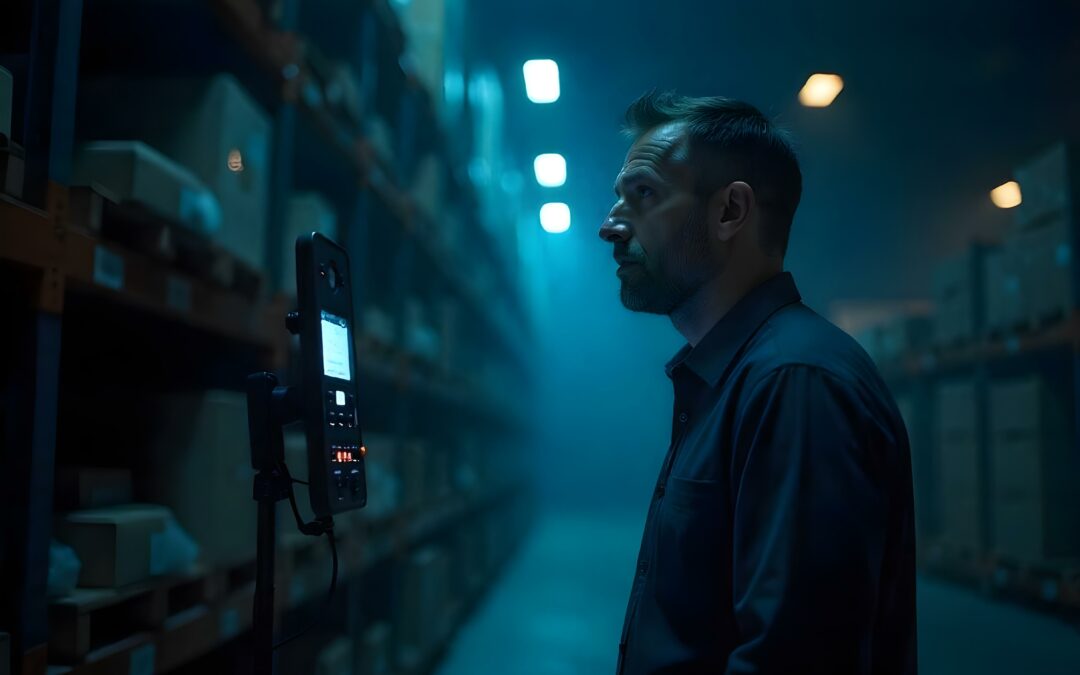Supply chain has been using voice picking for years to hasten and ease warehouse tasks. Since 2020, the global supply chain is going through a severe crisis and the sector is struggling to face its new challenges. Indeed, the increase in costs and the shortage of qualified workers are hindering the growth of the players. While the disappearance of voice picking in favour of other methods seemed inevitable, the opposite is happening. Here is why.
Voice picking: a tool dedicated to supply chain
What is Voice picking ?
Voice picking, AKA pick-by-voice or smart picking, is a hand-free solution based on speech recognition and voice assistance. It provides a way to accompany operators in their handling activities amongst other things. The system is integrated into headsets equipped with industrial microphones and is used to optimize order picking by voice. However, the tool has evolved and is now much more than an optimization gadget. Indeed, it can be completed by a barcode scanner, a radio frequency identification system (RFID) etc… In this case, the equipment becomes multimodal and allows much more comfort for the operators. According to a Grand View Research report from 2019, the annual growth rate of the voice picking market is up to 15%. The logisitics sector is also growing and MHI announces that adoption rate for mobiles technologies should increase from 22 to 45% in the next 2 years.
How does voice picking work ?
The principle of voice picking is to transmit information from the Warehouse Management System (WMS) to logistics operators. To do this, they wear a headset equipped with a microphone connected to a mobile device and a voice application.
- This equipment stocks orders information thanks to the WMS or CRM ;
- The system gives vocal instructions on the location where the operators have to go and what they have to pick ;
- Operators use a reference code (wake word) and the vocal assistant answers to confirm – or not – the action ;
- If the reference code or the quantity is incorrect, the assistant corrects the operators in order to allow them to modify their actions ;
- The mobile devices can be equipped with barcode scanners in which case the assistant can automatically read them and confirm or correct these ;
- Once the assistant has confirmed the action, it gives instructions concerning the next location and products.
Presentation video of KFI’s voice picking solution, using Vivoka’s Voice Development Kit. Some companies such as Vuzix also offer voice-enabled smart glasses to add visual functionalities to voice-directed picking.
New challenges for logistics in 2022
Logistics includes several activities such as warehousing and delivery of physical products to customers. It consists of the complete management of the product flow in accordance with precise specifications. It appears to be more and more essential since globalization and the rise of the internet. In 2020, Covid-19 induced an unprecedented crisis in logistics and the sector is since subject to a succession of events preventing it from returning to normal activity.
The ever-growing need for warehousing due to the explosion of e-commerce
E-commerce is one of the main business areas for the logistics sector. With e-commerce stores multiplying and product sales reaching $500 billion (Statista), the logistics sector should follow the curve and the needs of the sector as well. According to Statista, the e-commerce market could be worth more than 1 trillion dollars in the United States alone by 2023. From this comes a growing need for warehousing and logistics. Whether integrated or outsourced, logistics is an essential component of the value chain and should not be overlooked. Today, the sector needs to face new persisting challenges.
A sector evolving in a global crisis since 2020
In addition to globalization and the rapid growth of e-commerce entities, the sector has been facing new challenges these last years.
Historical Challenges of the sector
Logistics has always known growing demand. The sector is facing ever increasing challenges. The logistics market faces recurring issues that evolve in proportion to the dependent markets. Among them:
- Shortage in qualified labor and difficulties recruiting linked to the penibility of the tasks ;
- Risks of physical injuries linked to distractions and hazardous environment ;
- Errors in orders and lack of satisfaction from customers.
The unfavorable global context
The – not so unexpected pandemic – that struck the world in 2020, has weakened global supply chain, which has been one of the most affected sectors. Local impacts spread globally. To put it simply, delivery times were extended and are now struggling to return to a normal pace. Today, logistics still has a hard time recruiting and has a significant shortage of workers attracted to the sector. In addition to that, Brexit induced new issues linked to borders closure and foreign workforce. Moreover, the recent invasion in Ukraine and its international repercussions only add challenges, such as the increase in the price of fuel. In this context, logistics is not able to find back the necessary workforce and is – once again – understaffed whereas it is a promising sector. How does pick-by-voice adress new issues of an important sector for a global economy with ever-growing demand?
Voice picking advantages for supply chain
Now that you know what is voice-directed picking and what are the challenges logistics is facing, you may be wondering how voice-picking is supposed to adress all these issues? In the next section, we will be presenting the benefits of this tool for the sector in the current context.

Improvement of efficiency thanks to voice picking
Voice-directed warehousing allows operators to manage several tasks at the same time, without losing sight of their main task. For example, they can ensure the counting of products (cycle counting), while carrying out the replenishment. This is possible thanks to voice assistance and barcode readers are facilitating it. The operators’ concentration is thus directed towards high value-added tasks, while their actions are optimized. Voice picking also allows reduction of travel time between different locations in the warehouse. Indeed, operators can follow the indications given and avoid unnecessary round trips. Thanks to the verification, they are sure not to make any mistake due to inattention and can move on to the next part of the route without having to backtrack. Integrated voice assistance helps operators to keep their eyes and hands free. In doing so, they don’t have to take, read and drop instructions. Thus, they can focus on main tasks such as locate the correct items, pick the correct quantities and place them. Entering data or following written instructions can result in picking the wrong item or quantity. Therefore, significant time is lost. By simplifying the process and limiting distractions, speed and accuracy are increased.
Voice picking and errors reduction
The integrated systems are generally linked to the WMS, which will allow the analysis of the operators’ performance for continuous improvement. Managers can analyse potential errors afterwards thanks to video streams records. This allows to understand their origin and to find sustainable solutions such as reorganization. These performance analysis can also be a way to motivate operators to reduce their errors on their own, as it allows to monitor and encourage their efforts. A growth of efficiency and a drop in errors are the keys to customer satisfaction. Indeed, reducing order errors and delivering faster are among the most challenging issues facing the logistics industry. Voice-picking helps to address these and satisfy end customers as well as the various intermediaries. According to a study conducted in 2016, voice-directed picking reduces errors by 67% compared to paper instructions.
Voice picking for the enhancement of safety
Because of its very nature based on voice, voice picking is an effective solution to limit distractions. As mentioned earlier, no need to move eyes from one document to another, as the instructions are given by voice. Thus, operators can focus on their task and avoid taking risks linked to inattention. In addition, having your hands free is much safer when lifting heavy objects or using sharp tools. Operators are more aware of their surroundings and act accordingly.
Ease of hiring & optimization of learning time
The use of voice picking means more ease of tasks for operators and increased productivity. This implies a reduced need for human resources as senior-workers are able to manage their tasks more quickly and easily. In addition, the multiple languages supported by the technology allow individuals, who do not speak nor understand well a language, to refer to another with which they are more comfortable. This also simplifies the recruitment of new employees. Voice picking is an ideal tool for companies that have recruitment seasonality. Finally, new recruits are more quickly operational thanks to the use of intuitive technology. Without voice picking, training requires a long period of time spent alongside the most experienced employees, which can take weeks or even months. Indeed, the time needed to learn about the warehouse, the products, the paths and the different tasks to be carried out can be significant and vary depending on the person hired. The voice picking process allows to shorten the learning periods. It allows operators to quickly gain autonomy and productivity. The system only requires a voice model for recognition, which can be done in less than an hour. With operators better trained and faster via the connected glasses, productivity naturally increases. Our customers report an average of 15% to 20% improvement.
Voice picking solution by Vivoka
Vivoka offers an all-in-one solution that allows market players to design their own offline voice picking system. The VDK concentrates several voice technologies such as automatic speech recognition (ASR) and voice biometrics. It facilitates the development and integration of voice softwares. Thus, suppliers of voice picking hardware already trust us to accompany them and enable them to give voice to their equipment. Our voice technologies work off-line and are able to understand specific vocabulary. Our embedded systems have several advantages compared to the cloud giants:
- Small mobile devices, such as the headsets used by logistics operators, can support them;
- Offline operation ensures the security of processed voice data and protects your business from cyber attacks;
- Embedded systems eliminate the need to deal with network issues or the lack of internet in certain areas.
In order to know more, you can read our article about the difference between Cloud and embedded technologies.
Does automation threaten voice picking?
Several solutions exist today to further optimize warehousing work. For instance, robotics is at the forefront with major advances. However, although some warehouses and other companies have already taken the plunge, others are reluctant and some do not have the means to do so… Despite all the advantages of voice picking for the sector, does the automation of logistics threaten this tool?
Robotization of warehouses
Warehouses have better equipment specifically in developed countries. Several automation forms exist, such as:
- robotics;
- autonomous vehicles;
- warehouse drones.
Robotics is a fast-growing sector given the important fundraising wave among companies from this area. You can see it is a real thing considering the number of articles FreightWaves has on the subject. They also noted that investment in warehouse robotics startups increased by 57 percent in the first quarter of 2020, to reach more than $380 million. In an article of Modern Materials Handling magazine, James Lawton, vice president and general manager of automation at Zebra Technologies, said, “Today, less than 5 percent of warehouses and distribution centers are using picking robots. Within five years, that number will be over 80 percent.”. Really strong figures which predict an AI and robotization-oriented future. Nevertheless, some players (including VSEs and emerging countries) cannot afford such a revolution. That is why some hybrid automation tools already exist and coexist with humans to optimize processes to the maximum. For instance, some warehouses are already using robotic lift trucks. Fleets of smart drones, connected to a cloud-based WMS, help managing stocks in the warehouses. Moreover, some warehouse drones are equipped with visual sensors or barcode scanners to track inventory and automate procedures like cycle counting.
The human-machine cohabitation
Improved picking efficiency and ease of implementation in the warehouse are making voice picking an increasingly popular option for businesses. A report from GrandView Research indicates that this technology will grow 14.7 percent annually, reaching a volume of more than $3.1 billion by 2025. Voice picking thus remains a more than viable solution for logistics. Especially since the integration of robots implies huge costs for warehouses. Indeed, they would have to rethink their entire premises and installations because the current ones are incompatible with technologies. In addition, one could imagine other applications with complementary voice technologies. For example, with speech-to-text, operators could easily report for damaged products. This would greatly ease the process and allow for faster feedback. With voice biometrics, the engine start up could be faster and warehouses more secure. Indeed, it simplifies authentication and provides an additional layer of security due to speaker recognition. Voice picking still has an important place in the logistics sector. This is why there are hybrid solutions which combines users, voice technology and small robots. One example is “cobotics”, which is the field of human-robot collaboration. Cobots are designed to work with people and are not intended to replace them. Thus, we tend more towards collaboration than towards a drastic change in processes. Then, we could imagine implementing voice synthesis in warehouse robots to allow operators to interact with them in order to optimize even more their work.







